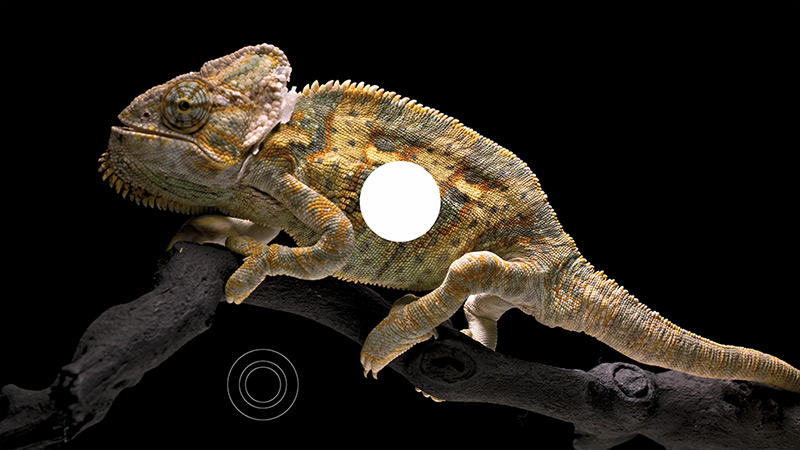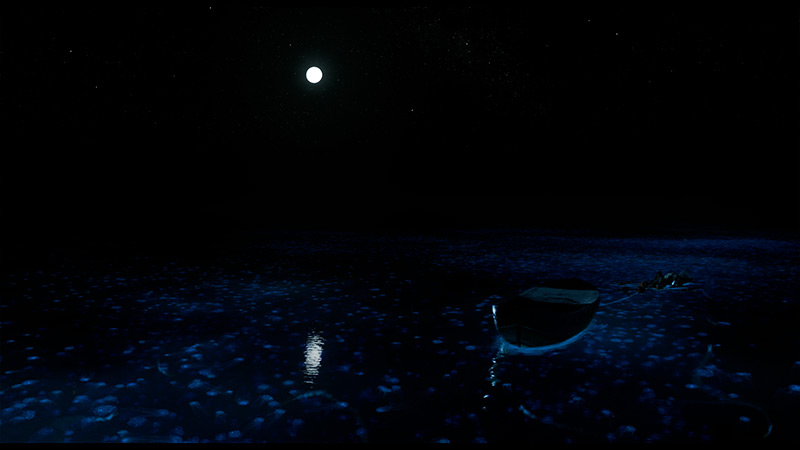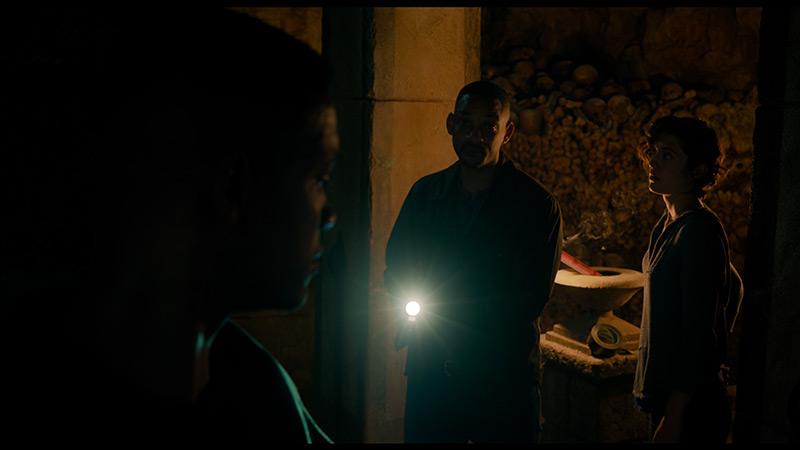The Philips PML 9009 is the brand's flagship LCD television with Mini LED backlighting. It boasts impressive build quality, a stylish remote, and Philips' unique multicoloured Ambilight feature. In terms of picture quality, black levels and contrast could be improved—they don’t quite match the depth and vibrancy offered by similarly priced competitors. However, thanks to effective image algorithms, tonal quality remains satisfying. The screen’s relatively low brightness is well managed, and the inclusion of Dolby Vision provides a gateway to HDR content. The TV’s smooth colour transitions are noteworthy, surpassing some higher-end models. The PML 9009 truly excels in gaming performance, offering an experience that will please any gamer. Its motion-smoothing system also deserves praise, with two adjustable sliders allowing users to select their preferred smoothing level, making it a solid choice for sports viewing. Although the TitanOS operating system is still evolving and lacks a wide range of apps, the manufacturer is expected to address this over time.
- Matching (Score)
- Our verdict
- TV appearance
- Where to buy
- Contrast and black detail
- HDR effect quality
- Factory color reproduction
- Color reproduction after calibration
- Smoothness of tonal transitions
- Image scaling and smoothness of tonal transitions
- Blur and motion smoothness
- Console compatibility and gaming features
- Input lag
- Compatibility with PC
- Viewing angles
- Daytime performance
- Panel details
- TV features
- Apps
- Playing files from USB
- Sound
Philips PML9009 / 9019 / 9059 vs Samsung QLED Q80D
Direct comparison
Check the best price offer:
Samsung QLED Q80DThe Xtra / PML9019 / PML9059 / PML9009 / PML9049 / AMBILIGHT TV
Q80D


Panel type: LCD VA
Resolution: 3840x2160
System: Titan OS
Model year: 2024
Complete the survey to find out the result

Panel type: LCD VA
Resolution: 3840x2160
System: Tizen
Model year: 2024
Complete the survey to find out the result

Overall rating
6.8
7.1
Movies and series in UHD quality
6.5
6.8
Classic TV, YouTube
6.3
6.7
Sports broadcasts (TV and apps)
6.6
6.6
Gaming on console
8.5
8.7
TV as a computer monitor
8.6
7.6
Watching in bright light
6.1
6.0
Utility functions
6.1
8.0
Apps
6.2
8.7
Sound quality
6.7
6.6
Complete the survey to find out what fits your preferences
Advantages
Superb tonal quality of scenes exceeding the capabilities of the television
Well-functioning dynamic tone mapping feature
Colour reproduction after calibration
Performance when connected to a console/PC
Great choice for gamers - a lot of functionality, low input lag, 120Hz
High brightness of the panel - good performance during the day
Good black levels and contrast
Excellent tonal transitions
Advanced smart system "Tizen"
Disadvantages
Significant halo/bloom effect
Poor viewing angles
TitanOs system is not as advanced as the competition
Average contrast and black levels
Average viewing angles
No recording function
No DTS (may complicate connection to home theater)
Our verdict
The Samsung Q80D is a versatile television model catering to both gamers and everyday users. With support for HDMI 2.1, a refresh rate of 120Hz, and low input lag, it is an ideal choice for gaming enthusiasts. Features like the Game Bar provide quick access to game settings, enhancing user comfort and allowing for a fully immersive gaming experience.
For everyday use, the Q80D excels as well. Running on the Tizen operating system, it offers a wide array of apps and Smart TV features, including popular streaming services like Netflix, YouTube, and Amazon Prime Video. Its high brightness makes it suitable for bright rooms, effectively minimizing reflections and ensuring a clear picture even in challenging lighting conditions. The solar remote control is a notable advantage, eliminating the need for batteries and enabling control of other devices, such as decoders, thereby increasing user convenience and reducing the clutter of multiple remotes.
While the TV lacks recording functionality, it compensates with excellent picture quality. Although it does not support Dolby Vision, it delivers exceptional visual experiences after collaboration. The contrast, black levels, and vivid colours position it among the best televisions in its class. The incorporation of quantum dot technology (QLED) provides a wide colour gamut, and the local dimming feature enhances picture quality in dark scenes, which is especially important for watching movies and series.
The Samsung Q80D is an excellent choice for gamers and everyday users. It offers high-quality picture and sound, with a comprehensive range of Smart TV features. Despite a few minor drawbacks, it is a television that will undoubtedly meet the expectations of even the most demanding users.
TV appearance








Contrast and black detail
6.6/10
6.7/10
Local dimming function: Yes, number of zones: 75 (15 x 5)
Local dimming function: Yes, number of zones: 100 (10 x 10)
Contrast:

Result
132,000:1

Result
16,550:1

Result
14,450:1

Result
7,850:1

Result
6,650:1

Result
37,350:1

Result
8,850:1

Result
20,350:1

Result
4,300:1

Result
3,800:1
Halo effect and black detail visibility:


The Philips PML9009 features a high-contrast VA panel. While it doesn’t produce the same depth and dimensionality as OLED displays, it remains a solid choice for home cinema, outperforming IPS/ADS panels in this regard. The measured static contrast ratio, at 6000:1 without local dimming, is commendable and showcases the Mini LED backlighting capabilities of this model. Though the contrast and black level measurements aren’t among the highest, the television performed well in certain scenes, such as Oblivion, where it effectively separated light – an achievement not always seen in much pricier units. Testing was conducted at medium power dimming; the lowest dimming level didn’t achieve satisfactory black levels, while the highest setting led to detail loss. Unfortunately, our test with The Revenant highlighted some issues. While background details were clear, the dimming zones disrupted the overall tonal balance, resulting in a noticeable halo effect around the subtitles.
The Samsung Q80D TV features a VA panel, which notably enhances contrast and black reproduction compared to IPS panels. VA panels excel in providing deeper blacks and better contrast, while IPS panels are known for superior viewing angles but compromise on contrast levels. In the case of the 55" model, the TV is equipped with 100 local dimming zones, although this number can vary with different screen sizes.
Local dimming contributes to impressive black levels, but it’s important to recognise that the algorithm controlling this technology, along with the limited number of zones can sometimes produce less-than-ideal results. Bright objects may be unintentionally dimmed to achieve deeper blacks. For instance, during tests of a scene from the film Oblivion, the lights merged into a single spot regardless of the dimming settings, highlighting the technology's limitations. Similarly, in The Revenant, large dimming zones became evident, such as the "Pause" logo in the upper left corner, showcasing the significant areas controlled by individual dimming zones.
Despite these drawbacks, local dimming technology still offers a marked improvement in picture quality over TVs lacking this feature or relying solely on edge-lit backlighting. The ability to completely turn off specific zones allows the TV to enhance brightness in selected areas, delivering a cinematic effect that is particularly effective in darker viewing environments.
HDR effect quality
6.1/10
5.8/10
Luminance measurements in HDR:

Result
548 nit

Result
550 nit

Result
824 nit

Result
491 nit

Result
582 nit

Result
927 nit

Result
423 nit

Result
612 nit

Result
242 nit

Result
856 nit
Scene from the movie “Pan” (about 2800 nits)


Scene from the movie “Billy Lynn” (about 1100 nits)


Static HDR10


Dynamic: Dolby Vision
Dynamic: HDR10+


HDR luminance chart:
Samsung QLED Q80D
HDR luminance
Philips PML9009 / 9019 / 9059
HDR luminance
The Philips PML9009 struggles to deliver the highest HDR performance. Scenes with effects around 550 nits don’t provide particularly impressive lighting, though the effects remain stable, an improvement over SDR materials. A notable exception is in Gemini Man, where a flashlight as the sole light source stands out. This is likely due to the absence of large dark areas and the relatively small size of the light source compared to scenes with larger, brighter elements like the sun. While the brightness results in HDR content aren’t quite strong enough to recommend this TV for productions utilising a wide colour gamut, it’s worth mentioning that the model does achieve decent coverage, reaching 93% of the DCI-P3 spectrum.
In the context of HDR, the Samsung Q80D television delivers impressive brightness performance in tested movie scenes, achieving levels between 600 to 900 nits when the frame is filled with light. This brightness enhances the vibrancy of the image and allows users to perceive the differences between HDR and SDR quality. However, challenges arise when small light effects appear against a dark background. For instance, in specific scenes, such as test slide 4 from Sicario 2, there is a noticeable drop in brightness due to the larger size of the dimming zones employed by the television. This limitation, coupled with the local dimming algorithm, affects the TV's ability to accurately display small bright elements on dark backgrounds, leading to a lack of brightness that can diminish the HDR effect, making it appear similar to SDR quality.
Factory color reproduction
5.3/10
6.8/10


Factory Mode
After calibration


Factory Mode
After calibration
During testing, the Philips PML9009 performed best in the factory "Filmmaker" mode, which we evaluated across both SDR and HDR content. A key characteristic observed in this mode is the EOTF curve’s behaviour in HDR content and gamma settings in SDR, designed to enhance image accuracy. However, the PML9009 presented noticeable issues, particularly with white balance, as a pronounced red dominance created a yellow tint across the entire image. This affected skin tones and white areas, with faces and whites appearing unnaturally warm. The colour shift was confirmed through the "ColourChecker" palette, where colours leaned towards warmer shades.
In the gamma analysis, responsible for image contrast, we noticed considerable inaccuracies early on. Our measured values spiked above the reference, causing dark scenes to lose detail and merge visually up to about 10% screen brightness. Following this, the values dropped below the target line, further degrading contrast—an area already challenging for this model.
In HDR content, the white balance remained similarly flawed, and the EOTF curve also restricted brightness levels, resulting in a dim, muted image. Colour inaccuracies were even more pronounced here, with lower luminance levels causing large deviations from accurate colours, which were clearly visible on the error graph, often exceeding acceptable limits. While aiming for cinematic quality, this mode ultimately fell short in delivering balanced colour and contrast fidelity.
In "Filmmaker" mode, which is considered the best out-of-the-box choice, the Samsung Q80D demonstrates solid colour reproduction. However, when viewing SDR content, there is a visible drop at the beginning of the gamma curve, suggesting that details in dark scenes may be less clear, which could detract from the overall viewing experience. While the white balance in SDR content is generally accurate, significant drops in blue at screen coverage above 70% can lead to less natural hues in both bright and dark scenes. Users might notice that some blue elements appear less intense, resulting in a warmer tint to the colour presentation.
For HDR content, the EOTF (Electro-Optical Transfer Function) curve being above the reference line most of the time indicates that the TV may struggle to accurately reproduce brightness and detail in the brighter areas of the image, which can be less than ideal for viewers. Additionally, there is a notable drop at the beginning of this graph, signifying the TV's difficulty in reproducing brightness in dark areas; this limitation is apparent in contrast and black tests, where several scenes fail to showcase the TV's full brightness potential.
Regarding white balance, the initial performance on the chart is promising, however, a sharp drop in red, coupled with a significant rise in blue, may lead to inaccuracies in reproducing certain skin tones and other key colours. This issue can be particularly noticeable in scenes where colour details are essential, potentially affecting the viewer's overall experience.
Color reproduction after calibration
7.5/10
8.1/10




Philips has long provided sophisticated calibration tools, including 2-point and 20-point grayscale adjustments as well as an advanced CMS (Colour Management System). These allow users to make significant improvements, and even those less attentive to image quality will likely notice a positive difference post-calibration. Both SDR and HDR content benefit from this process, notably eliminating the prominent yellow tint caused by an overemphasis on red in the white balance.
For SDR content, although gamma adjustments don’t entirely resolve the loss of detail in dark areas, the overall improvements bring most content to an impressive standard, with minimal, hardly perceptible errors. Colour accuracy is notably enhanced, achieving nearly reference quality with low deltaE errors.
HDR content, however, remains somewhat limited due to the display’s lower brightness capability. While the white balance has largely been corrected, a slight blue tint can occasionally appear. The EOTF curve aligns very well, providing accurate geometry, though colour errors persist due to the limited luminance. This calibration offers a substantial improvement but may still fall short for viewers who expect high brightness levels in HDR.
After calibration, the Samsung Q80D’s Movie mode offers a noticeable improvement over the out-of-the-box settings. Samsung provides an advanced suite of calibration tools, including 2- and 20-point grayscale adjustments as well as a CMS (Colour Management System), allowing for precise control over both SDR and HDR content. The calibration greatly enhances white balance, although minor errors remain in HDR content toward the end of the graph. Contrast has also improved, and the gamma curve for SDR content now aligns well with expected levels.
In HDR, the EOTF curve initially appears to sit ideally, however, closer examination reveals all lines are slightly above the reference line, a phenomenon that may be seen as the TV "enhancing" brightness for added appeal. This effect, however, comes at a cost: while the screen may appear brighter overall, it sacrifices detail in darker areas, leading to a loss of subtle textures in shadowed scenes. As a result, scenes with deep shadows or dark elements may lose some finer visual details that would enhance the viewing experience.
Smoothness of tonal transitions
7/10
8.8/10












In many films or series, you may have noticed instances where colour bands appear in areas that should exhibit smooth transitions. This is why we evaluate tonal transitions as part of our testing. The Philips PML9009 performed admirably in this area across all test scenes. While a few elements could benefit from finer processing, the overall result was impressive. Notably, it handled the challenging scene from The Green Knight exceptionally well, with no significant stuttering or unwanted artefacts visible, proving the TV’s capability to maintain smooth gradients even in demanding scenes.
The Samsung Q80D excels in tonal gradation, marking it as one of the television's standout qualities. It handles even the most challenging scenes with finesse, maintaining smooth transitions and fine detail across varying shades. Any minor issues with colour transitions are almost unnoticeable, ensuring the average viewer enjoys a seamless, high-quality visual experience. This impressive gradation performance enhances everyday viewing, delivering a visually rich experience even during demanding scenes.
Image scaling and smoothness of tonal transitions
7.2/10
7/10
Smooth transition function


Image without overscan on the SD signal


Given the impressive handling of tonal transitions by the Philips PML9009, one might expect similar success in the image scaling test. However, the results were less than stellar. When upscaling lower-quality images, like those from certain TV programmes or older films, the Philips algorithm tended to blur fine details noticeably, especially in intricate elements like fine branches or a model's hair.
On the other hand, the tonal transition performance remains noteworthy, with the TV offering several levels of smoothing. Even at the lowest setting, it effectively addresses non-smooth transitions in most materials, and crucially, it preserves the film grain effect, maintaining fidelity to the director's vision. However, it’s worth noting that some fine details may still appear slightly softened.
Performing admirably with low-quality content, the Q80D’s noise reduction feature uses gentle gradation to smooth out unwanted image disturbances. However, this technique can also soften certain details, like film grain, that some viewers might prefer to retain. For those who appreciate a more polished and smoother image, particularly with lower-resolution material, this becomes a significant advantage.
In terms of image scaling, the Q80D stands out, enhancing both quality and detail for lower-resolution media. Advanced processing technology reduces artefacts and maintains clarity, as seen in the clean edges and absence of fraying in elements like branches during test scenes. This capability makes it an excellent option for viewers seeking an enhanced and comfortable viewing experience, even with less-than-ideal content quality.
Blur and motion smoothness
7.7/10
7.3/10


Blur (native resolution, maximum refresh rate):






Blur (BFI function enabled):
Image flickers in this mode



The Philips PML9009 has a 120 Hz native refresh rate, a baseline standard for watching sports and an ideal setting for gaming on consoles or PCs. Philips includes an effective motion-enhancement system for users who want to reduce the stutter of 24 fps content or need fluid motion for fast-paced scenes, like in football matches. The dedicated "Smoothness" slider effectively mitigates stuttering, while "Motion Blur Reduction" enhances the sharpness of dynamic content. Each setting produces a noticeable difference, so users can tailor the motion effects to their preferences. Our recommended setup achieves a moderate smoothing effect, avoiding the exaggerated “soap opera” appearance.
Regarding pixel response time, VA panels like this generally fall short compared to OLED or even IPS panels, which can lead to a slight "black halo" trailing behind fast-moving objects. Although not a frequent issue with this TV, the effect can be seen in certain scenes.
Motion smoothness and blur reduction are standout features on the Samsung Q80D TV, thanks to its 120Hz panel and impressive response time. Users have two customisation options to enhance smoothness: "Motion Blur Reduction," adjustable on a 10-step scale for refined control, and "Blur Reduction," which works particularly well at higher refresh rates, enhancing clarity in fast-moving scenes. In the UFO test, the panel performs without trailing or forward-cloning effects, indicating a lack of overshoot and delivering clear, sharp visuals during rapid motion.
Console compatibility and gaming features
9.8/10
9.5/10
- ALLM
- VRR
- VRR range48 - 144Hz48 - 120Hz
- Dolby Vision Game Mode
- Correct implementation of HGIG
- 1080p@120Hz
- 1440p@120Hz
- 4K@120Hz
- Game bar








The Philips PML9009, with HDMI 2.1 ports supporting full bandwidth, is thoroughly equipped with gamer-focused features. Core functions like Variable Refresh Rate (VRR) and Auto Low Latency Mode (ALLM) are included, as well as the additional perks of G-Sync and FreeSync compatibility and low-lag HDR Dolby Vision support. All these gaming features activate seamlessly, proving this model’s suitability for gaming. The TV’s HGIG mode, particularly beneficial for gaming, adjusts HDR effects to the television’s capabilities to avoid image dimming and blooming, an advantage given the still limited number of games supporting Dolby Vision.
For added convenience, the PML9009 has a GameBar menu, allowing in-game setting adjustments without needing to exit. This menu includes features like a crosshair option and black level correction, which can enhance the visibility of shadowed areas—ideal for competitive play.
Overall, the Philips PML9009 offers a comprehensive setup for gamers, supporting VRR, ALLM, G-Sync, FreeSync, and HDR Dolby Vision to deliver immersive, high-quality gaming experiences across a wide range of titles.
The Samsung Q80D is a fantastic choice for gamers, offering a range of advanced gaming features that are rare in this price category. Equipped with four HDMI 2.1 ports, it enables key functionalities like ALLM (Auto Low Latency Mode), VRR (Variable Refresh Rate), and 120Hz support at 4K resolution, ensuring smooth and responsive visuals, essential for fast-paced gaming. The TV also supports HGIG (HDR Gaming Interest Group) for optimal HDR display in games and includes a Game Bar for quick access to gaming settings. Gamers with Nvidia graphics cards will appreciate the G-Sync support that eliminates screen stuttering and tearing.
Although it lacks Dolby Vision support, which may disappoint those seeking that HDR format, Samsung has partnered with Microsoft since 2022 to provide the Xbox Game Pass app, enabling cloud gaming access to a wide library of games without a console.
Input lag
9.6/10
9.8/10
SDR
HDR
Dolby Vision
The Philips PML9009 excels in input lag measurements, showcasing impressive performance across various signals and resolutions. Gamers will appreciate the manufacturer’s optimisation, with an exceptionally low input lag of 8 ms when playing at 4K120Hz with HDR—virtually imperceptible even in fast-paced online games. Furthermore, the game mode with Dolby Vision also maintains a commendable response time of 16 ms, ensuring that players experience minimal delay during gameplay. This combination of low input lag and effective game mode implementation solidifies the PML9009 as an excellent choice for competitive gamers seeking a responsive, immersive experience.
There's not much to say, the input lag at such a level is simply outstanding. It's hard to achieve a better result that would satisfy the players! The TV performed excellently at every tested resolution and frequency, both in SDR and HDR.
Compatibility with PC
8.6/10
7.6/10


The Philips PML9009 also excels in everyday tasks, with measured delays of just 8 ms providing nearly instantaneous reactions in the mouse-screen-eye connection. Its proper implementation of chroma 4:4:4 ensures crisp, sharp fonts, making it ideal for text work. While the subpixel layout of the matrix is BGR, this doesn't create any issues when using the Windows operating system. However, users on other systems may encounter challenges with text rendering, as those platforms may struggle to convert text accurately. Overall, the PML9009 is a versatile display suitable for gaming and daily productivity tasks.
As a computer monitor, the Samsung Q80D performs admirably. With chroma 4:4:4 support in "Game" mode, text appears crisp and legible, ideal for users working on text documents or spreadsheets. The TV’s exceptionally low input lag in "PC" mode—just 9 ms—ensures smooth, responsive performance, which is a significant advantage for both gaming and video editing.
One minor drawback is related to font rendering on dark backgrounds. When examining fonts closely, horizontal lines may appear darker than vertical ones, suggesting that the sub-pixels aren't fully illuminated in these instances. This could indicate a gap in the TV's algorithm for rendering fine lines, slightly affecting text detail on darker backgrounds. Despite this, the Q80D remains a strong choice for PC use.
Viewing angles
2.6/10
3/10
A commonly known drawback of VA panels that do not have an angle coating is their poor viewing angles. This is no different this time. Even after a slight shift off-axis, the image becomes washed out, and the colours undergo significant degradation.
Equipped with a VA panel, the Samsung Q80D has limited performance for viewing angles. At a 45-degree angle, there is a noticeable drop in brightness, and the image loses some sharpness—potentially an issue if viewed from different spots around the room. However, the VA panel has distinct strengths when viewed head-on. Blacks are deep and well-saturated, creating a rich, immersive picture. Additionally, dark colours retain much of their depth even when viewed from an angle, a commendable feature for a VA panel.
Daytime performance
6.1/10
6/10




Panel brightness
Average luminance SDR
Samsung QLED Q80D: 550 cd/m2
Philips PML9009 / 9019 / 9059: 564 cd/m2
While the Philips PML9009 offers good brightness levels for SDR materials—making it suitable for evening or dark-room viewing—the reflection suppression is only average. This can be attributed to the satin finish of the panel, which is prone to reflections from various light sources, as it neither absorbs nor diffuses them effectively. However, the relatively high brightness in SDR mode enables the television to perform adequately in brighter rooms, often outperforming many OLED models in this regard. This makes it a viable option for users who might watch content in well-lit environments.
With an impressive average brightness of 550 nits, the Samsung Q80D TV delivers clear and visible images across the entire screen, making it well-suited for bright rooms during daytime viewing. However, while the satin coating of the panel helps, the TV's glare reduction capabilities are only average. In brightly lit conditions, unwanted reflections can occur, which may disrupt viewing comfort, especially when light sources directly hit the screen.
Panel details
Subpixel Structure:


Panel uniformity and thermal imaging:


Philips PML9009 / 9019 / 9059
Samsung QLED Q80D
TV features
6.1/10
8/10
- HDMI inputs0 x HDMI 2.0, 4 x HDMI 2.1 48Gbps0 x HDMI 2.0, 4 x HDMI 2.1 48Gbps
- OutputsToslink (Optical audio), eARC (HDMI), ARC (HDMI), Mini-Jack (Headphones)Toslink (Optical audio), eARC (HDMI), ARC (HDMI)
- Network InterfacesWi-Fi 2.4GHz, Wi-Fi 5GHz, Ethernet (LAN) 100MbpsWi-Fi 2.4GHz, Wi-Fi 5GHz, Ethernet (LAN) 100Mbps
- TV receptionDVB-T, DVB-T2, DVB-S, DVB-S2, DVB-CDVB-T, DVB-T2, DVB-S, DVB-S2, DVB-C
Classic features:
- Recording to USB (terrestrial TV)
- Recording programming
- Picture in Picture (PiP)
- RF remote control (no need to aim at the screen)
- Backlit remote control
- Teletext
- Audio only mode
- Bluetooth headphones support
- Simultaneous Bluetooth headphones & TV audio
Smart features:
- AirPlay
- Screen mirroring (Windows Miracast)
- Voice search
- Voice search in native language
- Ability to connect a keyboard and mouse





Before delving into the software that powers the Philips PML9009, it’s essential to highlight one of the standout features of the manufacturer’s TVs: the multicoloured Ambilight backlighting. This unique feature enhances the viewing experience by projecting colours from the back of the TV that correspond to the on-screen action, creating a more immersive atmosphere.
The operating system used in the PML9009 is Philips' proprietary TitanOs. While it offers some benefits, it is notably more closed and limited when compared to other models that use the Google TV system. One significant drawback is the absence of essential applications such as Apple TV, MAX, Canal+, and Player. Additionally, TitanOs restricts users from performing basic tasks like scheduling recordings or recording to USB. Apple device users may also be disappointed by the lack of AirPlay functionality, which allows for easy screen sharing.
On a positive note, the TV supports connecting a keyboard and mouse, which can simplify navigation through the menu. However, it's worth noting that while the remote pairs via Bluetooth for voice selection in English, all other functions rely on infrared (IR) connectivity.
In summary, TitanOs has its limitations, especially for users who frequently utilize a variety of streaming platforms. It seems better suited for those who primarily engage with a few key services—what one might refer to as the "holy trinity" of streaming: Netflix, YouTube, and CDA.
A range of features on the Samsung Q80D television significantly enhances user comfort. Its advanced Tizen system provides an intuitive and smooth interface, making it quick and easy to navigate through apps and settings. With support for a wide array of applications, including popular streaming services, users can access diverse entertainment content without needing additional devices. Notably, the 2024 update includes support for the Polish language.
Additionally, the eco-friendly solar remote control offers convenience for everyday use, as it can also manage other devices such as home theatres, decoders (e.g., Canal+), and gaming consoles, which can be challenging for competing manufacturers. Gamers will appreciate several features tailored to enhance their experience. The television supports Variable Refresh Rate (VRR) technology, providing smoother game displays and reducing tearing and stuttering. With low input lag, responses in games are quick and precise.
The Game Bar function allows for easy access to key gaming settings without leaving the game, enabling adjustments to parameters such as VRR, input lag, frames per second (FPS), screen ratios, and sound settings, allowing gamers to optimize their experiences in real time. Additionally, the television supports AirPlay for effortless content streaming from Apple devices and connects to various Bluetooth devices, such as mice and headphones, increasing versatility.
However, it is important to note the lack of USB recording support and the absence of DTS audio format compatibility. This limitation means that content encoded in DTS may not be correctly reproduced, which could pose issues for those using Blu-ray discs or multimedia files that rely on this format for high-quality surround sound. To fully enjoy the audio experience, users might need to consider an external player or soundbar that supports DTS.
Playing files from USB
8.2/10
9.1/10
Supported photo formats:
Maximum photo resolution:


The default media player integrated into the Philips PML9009 provides a fairly comprehensive set of features but does have certain limitations. It supports nearly all common video formats except for the relatively rare .asf format. However, users may encounter issues due to the absence of the H.265 HEVC codec for high-bitrate content and a lack of support for .sub subtitle files, which are popular among many users.
With photo playback, the media player performs adequately, though it does not support some widely used resolutions and formats, such as HEIC, commonly found on Apple devices. The player excels in audio playback and leaves little room for criticism.
Unfortunately, the system's limitations prevent users from extending the player’s functionalities, meaning users are confined to the capabilities the manufacturer has included. This can be a drawback for those who rely on specific formats or additional features not provided by the built-in player.
The built-in player in the Samsung Q80D television is definitely one of its strengths. It handles almost all video and audio files used in our tests very well, with the only exceptions being the Dolby Vision format, which is unsurprising, and some less common codecs. However, the television performs somewhat worse with photo formats, as it only supports JPEG among popular formats, lacking compatibility with formats such as PNG or Apple HEIC.
Apps
6.2/10
8.7/10














































Sound
6.7/10
6.6/10
- Maximum volume--
- Dolby Digital Plus 7.1
- Dolby True HD 7.1
- Dolby Atmos in Dolby Digital Plus (JOC)
- Dolby Atmos in Dolby True HD
- DTS:X in DTS-HD MA
- DTS-HD Master Audio
At the outset, it is worth noting that sound quality is a subjective matter. The built-in audio system in the Philips PML9009 is characterised by clear high tones, but the bass is quite flat and significantly worse than in competing models in the same price range.
Equipped with a 40W audio system in a 2.2 configuration, the Samsung Q80D TV delivers solid sound quality, supporting popular Dolby codecs to enhance the audio experience for films and games. However, it’s worth noting that the TV lacks DTS support. This limitation can be addressed by connecting an external audio system, which can improve sound depth and immersion. Samsung also offers a range of soundbars compatible with this model, alongside the Q-Symphony feature, which synchronises audio between the TV and a soundbar for a richer output. Testing on the QE65Q80D shows that while the sound quality is decent, it doesn’t stand out compared to competing models. To fully appreciate the TV’s excellent picture quality, investing in an additional audio system is recommended. The sound remains well-balanced even at high volumes, maintaining clarity without distortion—a definite plus.
